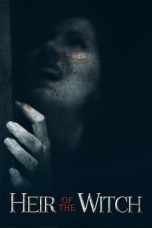- Source: The Sea Lady
The Sea Lady is a fantasy novel by British writer H. G. Wells, incorporating elements of a fable. It was serialized from July to December 1901 in Pearson's Magazine before being published as a volume by Methuen. The inspiration for the novel came when Wells caught a glimpse of May Nisbet, the daughter of The Times drama critic, in a bathing suit during her visit to Sandgate. Wells had agreed to pay her school fees after her father's death.
In presenting a creature of legend interacting with the prosaic contemporary genteel English society, the book clearly falls under the definition of contemporary fantasy, or even urban fantasy, although these subgenres were not yet recognized as distinct at the time.
Plot
The intricately narrated story involves a mermaid who comes ashore on the southern coast of England in 1899. Feigning a desire to become part of genteel society under the alias "Miss Doris Thalassia Waters," the mermaid's true intention is to seduce Harry Chatteris, a man she saw "some years ago" in "the South Seas—near Tonga" and who has since captivated her. She reveals this plan in a conversation with the narrator's second cousin Melville, a friend of the family who takes in "Miss Waters." As a supernatural being, she is indifferent to the fact that Chatteris is engaged to the socially ambitious Miss Adeline Glendower and is attempting to redeem his misspent youth by entering politics. With mere words, the mermaid shakes both Chatteris and Melville's faith in their society's norms and expectations, enigmatically telling them that "there are better dreams." In the end, Chatteris is unable to resist her alluring charms, even though succumbing to her supposedly means his death.
Themes
Couched in the language of fantasy and romance, blending with light-hearted social satire, The Sea Lady explores serious themes of nature, sex, the imagination, and the ideal in an Edwardian world where moral restraints are loosening. Wells wrote in Experiment in Autobiography that The Sea Lady reflected his "craving for some lovelier experience than life had yet given me."
In its narrative structure, The Sea Lady cleverly plays with conventions of historical and journalistic research and verification. According to John Clute, "Structurally it is the most complex thing Wells ever wrote, certainly the only novel Wells ever wrote to directly confirm our understanding that he did, indeed, read Henry James." Adam Roberts has argued that The Sea Lady was written in a kind of dialogue with James's The Sacred Fount (1901).
Cultural references
Miss Adeline Glendower, the elder of the Glendower half-sisters, is an avid reader of Mary Augusta Ward (Mrs. Humphry Ward). Her seaside reading material includes Sir George Tressady, and she is compared to the eponymous heroine of Marcella, both novels by Mary Augusta Ward. Marcella (Lady Marcella Maxwell, née Boyce) is a leading character in both novels.
Sarah Grand was a contemporaneous English feminist writer.
See also
The Lady from the Sea
The Little Mermaid
Undine
Mermaids in popular culture
References
Further reading
Austern, Linda; Naroditskaya, Inna, eds. (2006). Music of the Sirens. Bloomington (Ind.): Indiana University Press. pp. 56–58. ISBN 978-0253218469. Retrieved 8 September 2012.
Batchelor, John (1985). H. G. Wells. Cambridge: Cambridge University Press. pp. 62–66. ISBN 978-0521278041. Retrieved 8 September 2012.
Connes, G. A. (1969). A Dictionary of the Characters and Scenes in the Novels, Romances, and Short Stories of H. G. Wells (Repr. d. Ausg. 1926. ed.). Folcroft, Pa.: Folcroft Press. p. 404. ISBN 978-0838313534. Retrieved 8 September 2012.
James, Simon J. (2012). Maps of Utopia: H. G. Wells, Modernity and the End of Culture. Corby: Oxford University Press. pp. 47–51. ISBN 978-0199606597. Retrieved 8 September 2012.
McLean, Steven, "'A fantastic, unwholesome little dream': The Illusion of Reality and Sexual Politics in H. G. Wells's The Sea Lady", Papers on Language and Literature, 49 (2013), 70–85.
Parrinder, Patrick; Partington, John S., eds. (2005). The Reception of H.G. Wells in Europe (1st publ. ed.). London: Thoemmes Continuum. ISBN 978-0826462534. Retrieved 8 September 2012.
Silver, Carole G. (1999). Strange and Secret Peoples: Fairies and Victorian Consciousness. New York: Oxford University Press. p. 114. ISBN 978-0195144116. Retrieved 8 September 2012.
External links
The Sea Lady at Open Library
The Sea Lady public domain audiobook at LibriVox
An essay on The Sea Lady by Adam Roberts
Kata Kunci Pencarian:
- Legend of the Blue Sea
- The Tale of Lady Ok
- Tensei Ōjo to Tensai Reijō no Mahō Kakumei
- The Unchanging Sea
- The Eagle of the Sea
- The Vanishing Lady
- Soo Ae
- Rulers of the Sea
- Masters of the Sea (film)
- The Sea Hawk (film 1924)
- The Sea Lady
- The Lady from the Sea
- The Lady from the Sea (disambiguation)
- Our Lady, Star of the Sea
- Our Lady Star of the Sea Church
- The Sea Lady (Drabble novel)
- Mary Star of the Sea
- Our Ladye Star of the Sea
- Our Lady of the Sea
- The Lady from the Sea (Sunday Night Theatre)
A Haunting in Venice (2023)
In Love and Deep Water (2023)
Birth (2004)
The SpongeBob Movie: Sponge Out of Water (2015)
Miraculous: Ladybug & Cat Noir, The Movie (2023)
No More Posts Available.
No more pages to load.














